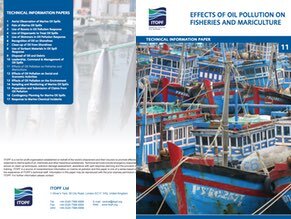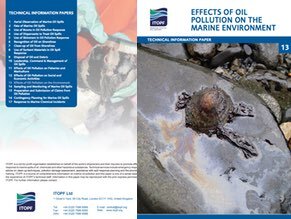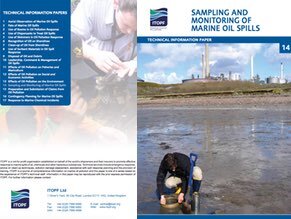Effects in Offshore and Coastal waters
Most oils float on the sea surface where they are spread over a wide area by currents, wind and waves.
Depending on the type of oil, it may disperse into the top few metres of the water column. As a result the potential environmental impacts of oil in open waters are generally confined to this upper area of the water column although, on occasion, some types of oil will sink and environmental impacts may be observed on the seabed. The types of organisms that are commonly impacted in an open sea spill include; plankton, fish, seabirds and marine mammals and reptiles.
Plankton
The upper pelagic zone of seas and oceans support a myriad of planktonic organisms, including bacteria, eggs and larvae, and a variety of animal and plant species. It is well established that plankton is sensitive to oil exposure and consequently short-term impacts should be expected in the immediate vicinity of the oil. However, organisms with planktonic life stages are characteristically present in the plankton in huge numbers and will naturally suffer very high levels of mortality. As a result, a large proportion of a given species will remain unaffected by the spill and it is rare for plankton mortalities following a spill to result in reduced adult populations.
Fish
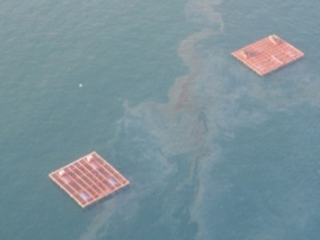
Although the eggs and larvae of fish may be susceptible to the effects of oil, adult fish tend to be more resilient. Reductions in wild fish stocks in offshore and coastal waters following oil spills have rarely been detected, as it is thought that fish can detect unfavourable water conditions and actively swim away to avoid them. Where mass mortalities have occurred, they have been caused by very high, localised concentrations of dispersed oil in shallow or confined waters. Fish mortalities can occur with cultured fish stocks where individuals are unable to actively avoid the oil.
Seabirds
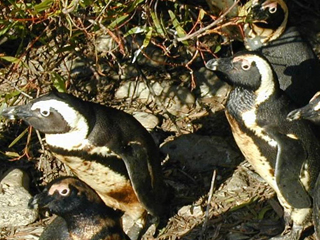
In open water, seabirds are some of the most vulnerable of all animals, and in some incidents large numbers may perish. Fouling of plumage (which is essential for thermoregulation and buoyancy control) is the most visible effect. Although cleaning and rehabilitation of birds may be attempted, success is often linked to the species of bird, and in many cases only a small fraction of those treated will survive. However, it is encouraging that with experience and research, best practices for bird cleaning are emerging and outcomes are improving. Increasingly, oil contingency plans define policies on how to deal with oiled seabirds and wildlife.
Sea Mammals and Reptiles
Due to the tendency of oil to float at the sea surface, marine mammals and reptiles are at risk as they must surface to breathe. The oil can potentially cause harm to nasal tissues and eyes and whilst mortalities caused by oil have been recorded, the majority of mortalities which coincide with oil spills have usually been found to result from other causes. Mammals that rely on fur to regulate body temperature can be vulnerable to the effects of oil as they may be harmed or die from hypothermia or overheating if their fur becomes matted with oil. For marine reptiles, the greatest impact is probably away from the open sea and on their nesting beaches should they become contaminated with oil.
11. Efectos de la contaminación por hidrocarburos en el sector de la pesca y acuicultura
Este documento describe los efectos de la contaminación por derrames de hidrocarburos procedentes de buques en el sector de la pesca y acuicultura y proporciona una orientación sobre las medidas de respuesta y estrategias de gestión que pueden ayudar a reducir la gravedad de las repercusiones de los derrames. Los daños sobre otros recursos económicos se tratan en el Documento de Información Técnica correspondiente.
Categories: Environmental effects, Economic effects, Technical Information Paper (TIPS)
13. Efectos de la contaminación por hidrocarburos en el medio marino
Este documento describe los efectos de los derrames de hidrocarburos procedentes de buques y las actividades de limpieza resultantes en la fauna y flora marinas y sus hábitats. La discusión sobre las complejas interacciones entre los hidrocarburos y los sistemas biológicos ha recibido particular atención y se han realizado diversos estudios a lo largo de muchos años. Los informes técnicos de ITOPF Efectos de la contaminación por hidrocarburos en el sector pesquero y maricultura y Efectos de la contaminación por hidrocarburos en las actividades sociales y económicas tratan los efectos específicos de los hidrocarburos en la industria pesquera y maricultura y en la actividad humana en general.
Categories: Environmental effects, Technical Information Paper (TIPS)
14. Muestreo y monitorización de derrames de hidrocarburos en el medio marino
Este documento proporciona una amplia descripción general de los procedimientos de monitorización y muestreo que pueden utilizarse para realizar la monitorización cualitativa y cuantitativa de la contaminación por hidrocarburos. Los análisis cualitativos pueden confirmar la fuente de contaminación, y los programas de monitorización suelen asociarse con los cambios cuantitativos en los niveles de hidrocarburos con el paso del tiempo. Se proporciona una guía sobre la mejor práctica analítica y se explica la terminología habitual. No obstante, las técnicas y observaciones necesarias para monitorizar efectos ecológicos o biológicos específicos, y para monitorizar los contaminantes en el aire, quedan fuera del alcance de este documento.
Categories: Environmental effects, Planning & operations, Technical Information Paper (TIPS)

